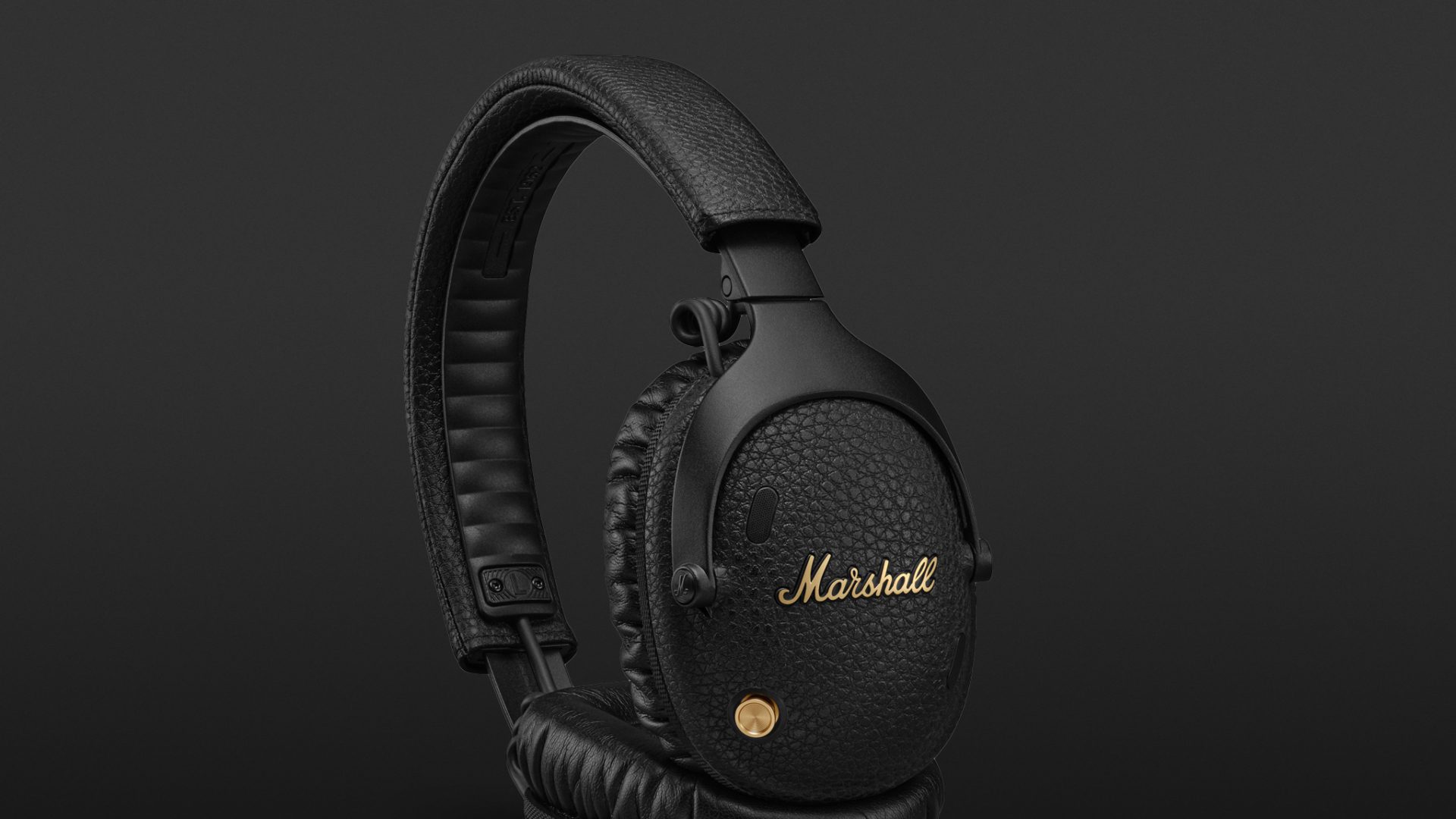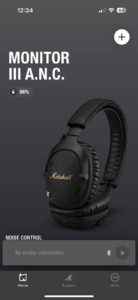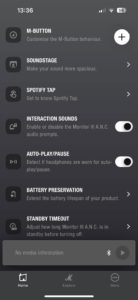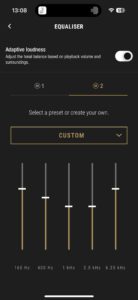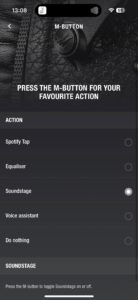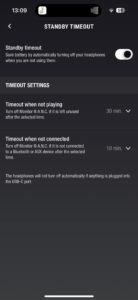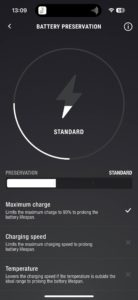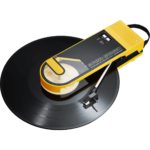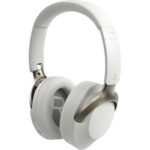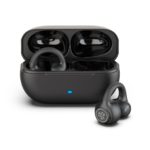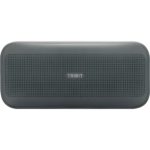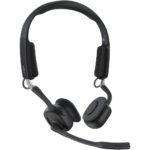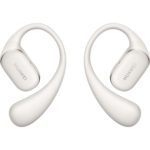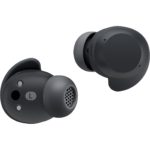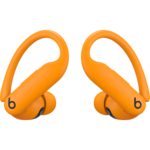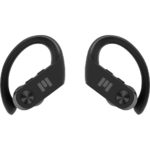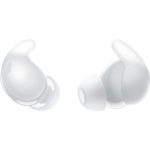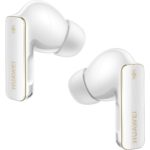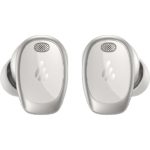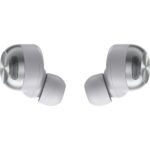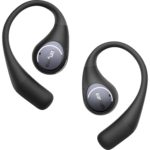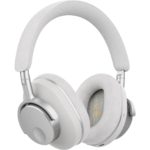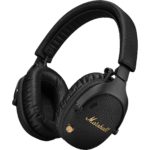On the outside, the Marshall Monitor III A.N.C. looks a lot like its predecessor. But a lot has changed on the inside, including Bluetooth 5.3 with LE audio, spatial virtualisation ‘Soundstage’, direct access to Spotify and a battery life that can keep up with the most extravagant of tours. There’s also excellent noise cancellation, a decent app and the kind of design and sound you’d expect from Marshall headphones.
- Powerful sound
- Effective ANC
- Runtime
- Feature list and app support
- Multipoint
- Noisy transparency mode
- Wind sensitivity
- No IP certification
A significantly longer battery life, the removal of the analog mini-jack input, preparation for Auracast, and otherwise everything remains the same in terms of quality and workmanship? The Marshall Monitor III A.N.C. stays true to itself and yet continues to evolve.
Marshall Monitor III A.N.C.: Scope of Delivery
Inside the stylish box, you’ll find the Marshall Monitor III A.N.C., a USB-C charging cable (21 cm), a 3.5 mm mini-jack to USB-C audio cable (120 cm), documentation, and a somewhat chubby hard case lined entirely in classy Bordeaux on the inside. Weighing 250 grams, the Monitor III A.N.C. sit snugly on your head and around your ears, applying sufficient pressure so that there is already a notable degree of isolation from the outside world. The finely notched sliding mechanism on the headband and the swivel/fold hinges on the earcup arms for compact folding are impeccably crafted.
The coiled cable emerging from the top of the earcups is a nice detail, though it now appears a bit less protected in this new version, since it’s only covered by an inner silicone band rather than being sewn into the padding as before. On the other hand, this design is easier to repair, which is definitely the right direction in terms of sustainability.
A comfortable fit for the promised 100 hours of battery life without noise cancellation—and 70 hours with it—is certainly guaranteed. However, it’s worth noting that Marshall does not provide any IP certification for the Monitor III A.N.C. The headphones are not officially weatherproof.
The ultra-soft, pleasantly conforming earpads can be easily detached from the earcups by twisting them off. Hidden behind a relatively dense fabric layer sit the dynamic 32 mm drivers, which reproduce frequencies from 20 Hz to 20 kHz and—according to the brand—deliver that legendary sound with thundering bass and screaming highs.
Bluetooth & Connections
Marshall equips the Monitor III with Bluetooth 5.3, which delivers audio to your ears via SBC and AAC codecs. In addition, the Monitor III is compatible with LE Audio, preparing it for upcoming technologies like Auracast.
Even without convenience features like Google Fast Pair, pairing the Monitor III is absolutely hassle-free. Thanks to multipoint capability, it can connect to two devices at the same time. Another option is to use the included 3.5 mm mini-jack-to-USB-C cable with the headphone’s USB-C port, which replaces the analog input of the previous model. However, a passive (i.e., power-free) operation is not possible this way. Fun fact: Using the mini-jack-to-USB-C cable replaces one of the multipoint Bluetooth sources—so if you thought you could connect three sources simultaneously, you’ll be disappointed.
Controls
Thanks to the combination of hardware and app—where you’re prompted to install the app as soon as you pair for the first time—the Marshall Monitor III A.N.C. offers comprehensive control and customization. All playback functions, pairing mode, and on/off can be intuitively and reliably managed via the multidirectional mini joystick on the right earcup. Additionally, there’s an ANC button on the right hinge and an M button on the left hinge, which can be freely assigned to numerous functions in the app.
Using the ANC button, you toggle between noise cancelling and transparency mode, both of which can be set to three intensity levels in the app. In the “Equalizer” section, you have access to multiple presets plus a five-band EQ to adapt the Monitor III’s sound to your preferences. There is also an “Adaptive Loudness” feature that adjusts the sound to your surroundings.
In the “Soundstage” area, you can define how large the simulated virtual stage should be and how much effect to apply. Next, there’s a “Spotify” tab explaining how simple it is to access Spotify and what pressing the M button does—if you’ve assigned Spotify to it (and have the app installed). You can also turn on or off the interaction tones and configure how the headphones behave when removed. In the battery-saving section, you define how best to protect the battery. Finally, you can set various auto-shutdown timers.
ANC and Transparency
The adaptive noise cancelling of the Marshall Monitor III A.N.C. works quite well to very well, though—depending on the level—you may hear a slight background noise when it’s active. On the highest setting, for instance, the noise from a busy street with cars and trams is reduced to a gentle whoosh. Low frequencies are very effectively canceled, while high frequencies are somewhat less suppressed. Only the wind blowing against the outward-facing microphones disrupts the peace with an unpleasant rumble.
In contrast, the transparency mode is marred by a noticeable background hiss, but it still provides good intelligibility and awareness of your surroundings without needing to remove the headphones. The impression is more natural rather than technical.
Sound
Since Marshall is somewhat synonymous with rock and guitars, I’ll start by trying out David Gilmour’s new album, and I’m satisfied with how clear and powerful this legendary musician sounds via the Monitor III. There’s a dry, dark bass that pairs well with the rich midrange, providing plenty of space for the smooth treble to shine. The snappy sounds of Avishai Cohen in a classic jazz trio with piano, bass, and drums really jump out, revealing the Monitor III A.N.C.’s character, which lies somewhere between earthy and direct.
Switching to current chart hits, the thumping bass continues to impress. However, a bit of top-end brilliance is missing due to the somewhat dull treble, which becomes more noticeable on vocal-heavy pop tracks where the lead vocals, though forward in the mix, don’t fully come to life. Boosting the highs a bit in the EQ helps here.
The “Soundstage” feature is designed to create a virtual stage, from small to very large, with varying degrees of effect. Its success varies: for the “Wicked” musical soundtrack, this setting is a win, because the show’s over-the-top opulence calls for a big stage—which the Marshall delivers convincingly. Green Day’s dense mix also opens up somewhat, making the racket feel airier. For audiobooks or podcasts, though, “Soundstage” might not be ideal because it pushes voices away from the listener and adds a bit of echo.
One aspect done very well by the Monitor III A.N.C. is the integration of noise cancelling, which does not audibly alter the sound when active.
Then there’s “Adaptive Loudness,” which doesn’t actually increase volume when moving from a quiet environment to a noisier one. Rather, Marshall tweaks the sound slightly—for example, boosting bass at low volume. The changes are very subtle, and sometimes I’m not sure if I’m imagining it or if something is genuinely shifting.
Overall, the Marshall’s sound is cohesive, powerful, and full-bodied, even at high volume. There’s some lack of sparkle in the highs, so you never quite escape the vibe of a smoky rock club. But that’s not necessarily a bad thing, right?
Phone Calls
It’s noticeably more comfortable to turn off the ANC or switch to transparency mode during a phone call, allowing you to hear your own voice—creating a more natural speaking experience. People on the other end uniformly praise the clarity of my voice, describing it as typically midrange-focused yet very normal, as if I were using a phone directly against my ear rather than via headphones.
Conclusion
The Monitor III A.N.C. aren’t nearly as hard-edged as Marshall’s branding might suggest. But it’s true the Monitor III A.N.C.’s sound is somewhat “solid” and limited in the higher frequencies. Regardless, these are well-fitting, impeccably crafted over-ear headphones that are technically up-to-date. Alongside their incredible battery life, they offer a well-balanced mix of features and sound, pleasing both grizzled old punks like Green Day’s frontman and musical-lovers like me. All in all, it’s an outstanding update to a legend. Keep on rockin’!
Frequently Asked Questions (FAQ)
Are the Marshall Monitor III A.N.C. waterproof?
Unfortunately not. They lack an IP certification, so it’s best to avoid heavy rain or excessive sweat. They’re robust enough for occasional splashes in everyday use, but real outdoor adventures in pouring rain should be avoided.
How well does noise cancelling of the Marshall Monitor III A.N.C. work in windy conditions?
Overall, the ANC is very effective, but the outward-facing microphones are sensitive to wind. Strong gusts can cause a low rumbling sound.
Can the earpads of the Marshall Monitor III A.N.C. be replaced?
Yes, the soft earpads can be easily twisted off the earcups. This is useful if they wear out after extensive use.
Are the Marshall Monitor III A.N.C. suitable for home office calls?
Absolutely. The clear voice transmission and effective ambient noise cancellation make phone calls pleasant. However, if there’s wind noise, we recommend switching off ANC or using transparency mode.
Can you use the USB-C cable of the Marshall Monitor III A.N.C. without battery power?
No. While you can connect the 3.5 mm-to-USB-C cable, the headphones won’t function entirely without power. The Monitor III A.N.C. needs its internal battery to bring the sound to life.
Technical specifications
- Ear couplingOver-ear
- Typeclosed
- Transducer principledynamic
- Frequency response (headphones)20 - 20,000 Hz
- Impedance35 ohms
- Sound pressure level (SPL)@1 kHz: 117 dB
- Weight without cable250 g
What's in the box
- USB-C to 3.5 mm audio cable
- USB-C charging cable
- Carrying case
Special features
- BT version: 5.3
- BT codecs: SBC, AAC









